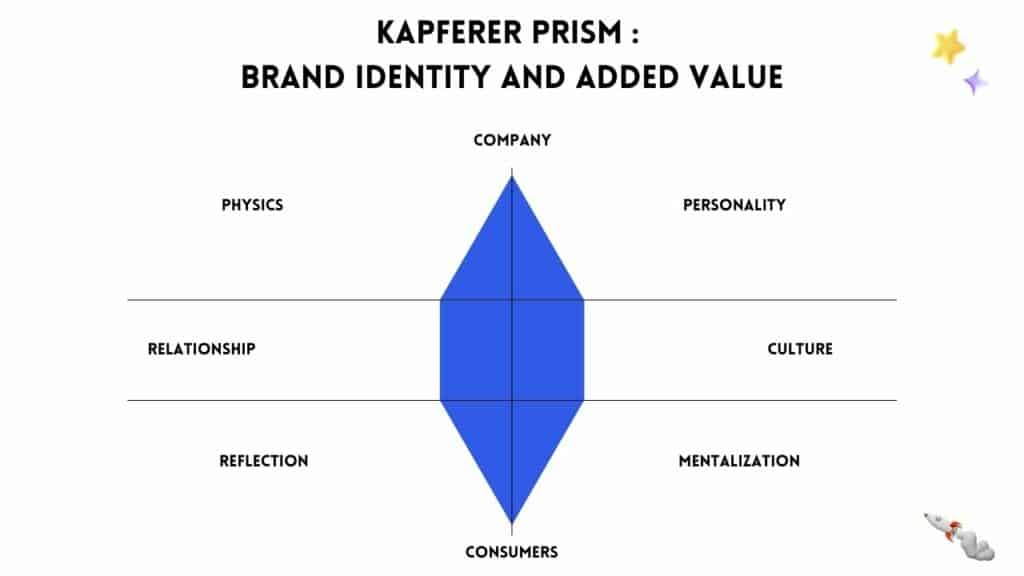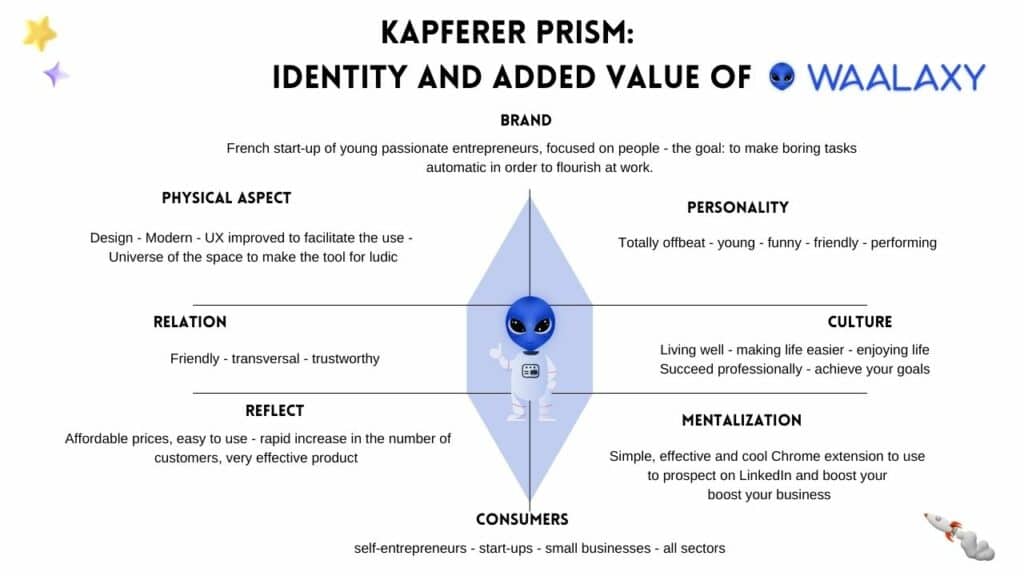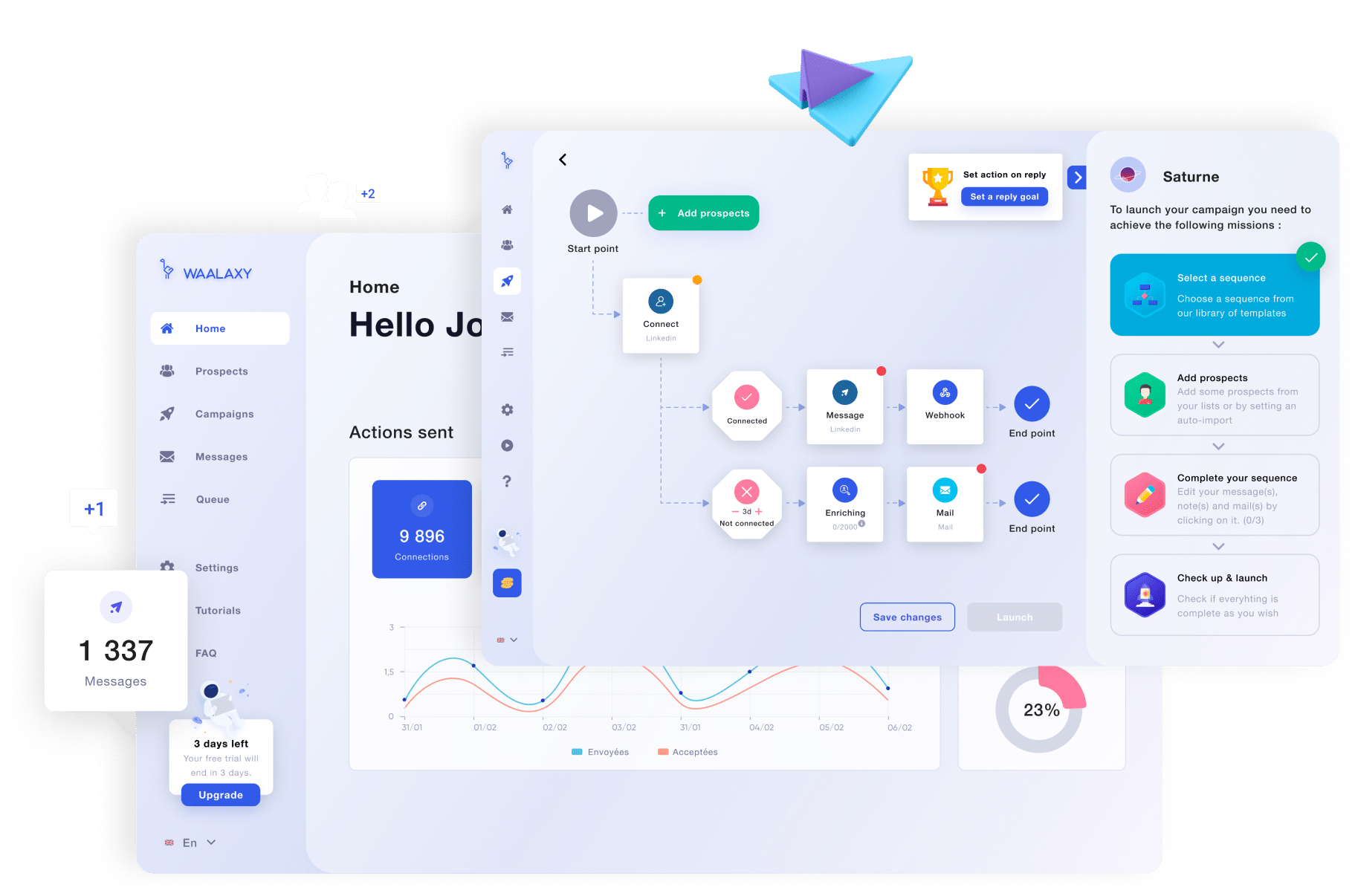As an entrepreneur or CEO of a company, several financial indicators are essential to your development, including one: the added value. In this article, you will :
- Finally understand the concept of added value?
- How to calculate it?
- What is it used for?
Ready to become an ace at this KPI? Step right up! 🚀
Added Value: Definition
When you look for the clean definition of value added online, you always come across the hyperpragmatic calculation of good old national accounting. 🤓 While we’ll get to that definition in a few moments, I think there’s a real lack of perspective on what we find online. So let me be a little clearer. Added value isn’t just quantifiable numbers, it’s :
The ability of a business (or person) to generate wealth
. That is to say, to be able to bring an added value, whether it is financial, human or corresponding to a product or a service offered. Example: I bought a waterproof phone. Its wealth is its waterproofness. The main added value that marketing will focus on is its ability to be submerged in water. 📱
It is also used as the basis for calculating TVA and the calculation of the GDP in volume (gross domestic product) of a country, important right? 😎
Added value : example?
Was my example of the telephone not clear enough? No worries, we will give you a more concrete one. Let’s take the example of a garment:
- This KPI in the production process of a garment represents the difference between the price of the garment sold and the sum of the values of the textile, the raw material, the sewing machines, the buttons, the electricity, the imports and all the other factors consumed to produce this garment.
How to calculate the added value ?
Many items have different value-added calculations. Here we explain it all to you, simply!

How to calculate the added value of a company?
The calculation of the added value of companies is very simple:
VA = Commercial margin + Market production of the year – Consumption of the year from third parties.
🍤 Let’s unpack this a bit to help you see it more clearly:
- 🍎 Trade margin: If you buy apples from a producer for 0.20 cents a unit and sell them in your store for 1€ a unit, then your margin is 80 cents.
- 🍏 Production for the year: the total goods and services produced in a year. So, all the apples sold over the period you want to analyze.
- 🚛 Intermediate consumption for the year from third parties: These are all the external goods and services that the company consumed and paid for to third parties. (In our example: incidental costs of purchasing apples, paid personnel costs…).
Let’s look at the two different calculation formulas now! ⬇️
VA calculation: from the company’s net income
In order to succeed in this calculation, you must first measure the net income:
Once you have calculated your net income, let’s get down to business:
Still alive after this calculation? Well done! 🎊 Let’s move on to the second way! ⬇️
Value added calculation: from the sales margin
To succeed in this calculation, you must first measure the sales margin, which then allows you to measure the VA :
As soon as you have your sales margin, you can perform this calculation:
That’s it, you now have the two methods to calculate the VA, it’s up to you to choose your favorite. ❤️
Analyzing the value added result for the company
Once you have calculated your performance indicator, you need to analyze it to understand why this result. There are two possible scenarios:
- Low value added:
- The cost of raw materials or the cost of producing goods is too high.
- The basic selling price is not high enough.
- High added value: your realized production cycle is rich, your company can without difficulty, cover salaries, pay taxes and make potential repayments to financial partners.
What is the purpose of added value of your company ?
Measuring the value added of a company, from a global point of view, is what you bring different on the market. What is your value added? There are several ways to define a company’s brand identity, the most well-known being Kapferer’s identity prism. It sounds super academic to pull out a marketing school prism, but I actually find it super relevant.
If you don’t identify the value you want to bring to the market, what makes up that value, and how you want consumers to perceive you, your offering will be fuzzy, and if it’s fuzzy, it won’t sell. 💨
Define your value in the marketplace through the Kapferer prism
You can grab this image to make your own prism. It’s about identifying who you are in the market and what you bring to the table to differentiate yourself.

Kepferer Prism Example
Here is an example of how to set up the Prism on Waalaxy. 👽 You can find quite a few examples online like the Perrier or Coca-cola identity prism which are very well known. Actually, I created this one just for self-promotion, but hey, it will still serve you well 😉
Here you quickly understand what Waalaxy brings and what its competitors don’t.

Don’t know Waalaxy? Click the button below to check out our automation tool! ⬇️
Discover Waalaxy 🪐
How do you generate added value?
To generate added value in accounting, you need to have thought through your market. You have to make sure that the margin corresponds to market trends and is not too small. To put it simply, there are two trends:
-
- Low margin = large volume of production, focused on the quantity produced. You will hve to produce and sell a lot for the business value to flourish. Example: white socks. 🧦
- High margin = small production volume, but focused on product quality. You’re going to have to focus on product value-added and content marketing to make the consumer understand the benefits. Example: a high-end watch. ⌚
Of course, there are nuances in there, and I’ll help you understand them a little bit below. 👇
Why is value added a better measure of production?
Quite simply, because it is the most comprehensive. If you only calculate margin, you’re not taking into account outside expenses.
If you only calculate the turnover (sales price x quantities sold), you have no idea of either the margin or the expenses. I don’t advise leaving everything and swearing by the VA, but you can’t ignore it either.
What are value adding products?
A product with high added value is a product that brings significant wealth to the person who uses it. When I talk about wealth, I mean it in the broadest sense and not only economically: saving time, improving quality of life, health benefits. There are two types of products. (again, this is a caricature).
- The essential product.
- The gadget product. (non-essential).
The Covid era made many companies remember how non-essential their product was. 😂 The product that is essential to the health of your business, like the management CRM, the internet connection… its vendors that you are naturally going to want the best quality for. Without them, you can’t work.
Non-essential products are those that will improve your working conditions a little, they are comfort tools. They will certainly improve your performance, but will not be the main reason for the success or failure of your business. Well, an essential product, by definition, brings a strong added value to your activity.
Determine, prove and communicate
Just because you have a non-essential tool doesn’t mean it doesn’t add value, you just need to learn how to determine it, prove it and communicate it.
- ❓ What is the value my product brings to my customers? > Identify all the benefits of my product or service.
- 🔍 How do I provide evidence that this value is real? > Conduct studies, tests, feedbacks, product demos…
- 📳 How to transmit this information to my target, my prospects, my customers? Complete the Kapferer Prism > identify the brand identity and focus on its differentiation > communicate via social networks, advertising, digital Ads.
Internal Audit Added Value : What is That ?
Now we move on to the third and final way to talk about added value. The human value. That is, what you as an individual will bring to an organization. For this, we will see that there are the added value sought by a recruiter to hire a person or a manager to create a team.
How do you identify value-added profiles?
It is often said that the best people leave first, this is also the case in the recruitment world. Of course there are exceptions, but those exceptions don’t stay available for very long either. It’s kind of like an apartment well below market price. 🤩
Well then, these apartments, how do you find them?
On LinkedIn.
On LinkedIn,
Oh, and on LinkedIn.
No, more seriously. There are lots of ways to find candidates: on job boards or attending events like job fairs, but LinkedIn remains the most comprehensive and effective source for employment.
Read the guide on how to conduct a good search on LinkedIn. 👀
How to hire high value-added profiles?
The added value of the company starts with the employees. It even starts with the employees, because they are the first in the production chain.
Without a developer, there is no application.
Among the list, several tips for improving to create perceived value:
- Compensation of employees.
- Share of wealth redistributed,
- Consideration.
- Well-being in the company.
What does it mean to bring value to a company?
If you are an employee or a job seeker, you are probably wondering how you can be useful to the company. In any case, just by asking yourself this question, you have the right attitude. To do this you’ll need to:
- 🌟 Know your values: make a list of your knowledge and skills, learn to identify them and know how to defend them. (Fact + concrete example + what allows you to measure the results).
- For example: I am an experienced writer, I have written more than 200 articles for Waalaxy, as I speak there are 100+ thousand visitors per month on the blog.
- 🏨 Know the business needs: what skills will create profits for the company? Don’t focus here on what you know how to do, think broader.
- ✅ Identify areas of improvement you can contribute to: wealth creation is a collaborative effort between the company and the employees. If you see where you can contribute to a value added activity, present it!
- 👨🏫 Train yourself. It’s super important to identify the skills you want to develop and the skills the company will need tomorrow. Really use HR support to bridge the gap between what you need and what you can bring.
How to prove your added value?
Here, we are getting closer to social selling.
What value do you think you can add?
I’m going to repeat myself, but the best method for convincing people dates from Aristotle, and is still relevant today.
- Ethnos: it’s your ability to be assertive.
- Logos: it’s knowing how to argue.
- Pathos: Knowing how to prove that you have value.
I will add an important point:
- Knowing how to differentiate yourself.
If you need a little confidence boost, there’s a video here that I really like that works for developing simple techniques. 👀
Conclusion of the Article: Added Value Def
A quick reminder of what was covered in this article:
- Value added definition.
- How to calculate it?
- From the net result of the company.
- From the commercial margin.
- Analysis of the result of the VA.
- Understanding the added value ?
Let’s move on to the Q&A ! 💭
FAQ’S of the Article : Added value
What is the difference between added value and revenue?
It’s simple. VA is the difference between sales and intermediate consumption. 😎 Roughly speaking, it is the wealth created by the company during a fiscal year.
Is added value a good indicator of a company’s performance?
The answer is YES. This KPI allows us to know the capacity of the company to generate significant profits, i.e. the money it earns in relation to the factor costs of production.
Why added value is important for a business?
By what means can you measure the value you add? There are different ratios, depending on the value you want to measure: human, or financial.
Financial ratios added value (accountability)
There are other ratios to understand the good health of the company.
- Calculation in relation to net income: Net income/Sales. (Is it profitable?).
- Calculation in relation to EBITDA : Gross value operating surplus (GOE) / Sales.
- The global net working capital (GNWC) is calculated as follows: Permanent capital (top of liabilities) – fixed assets.
- The working capital requirement (WCR) is calculated as follows Current assets – Current liabilities.
Learn more about these ratios. 👀 As a reminder, the calculation of the AV is:
Human ratios of added value
Now, in order to calculate the added value brought by the employees, we must try to understand health of the company on the human aspect.
- Turnover rate: Do people stay with the company? It is more difficult to create value if skills are not developed over the medium/long term.
- Absenteeism rate: The more employees are absent, the more they are demotivated by their work. (except for serious personal reasons of course). As a reminder, motivation is one of the pillars of human AV contribution, without motivation, there can be no professional development and creativity.
- Supervision rate: Do we need to supervise our teams a lot? If the answer is no, this can be a very good indicator of autonomy.
- Evolution of the wage in relation to the turnover.
- External rate: Is there a lack of internal skills to develop certain activities?
- Breakdown of contract types: The passage of an intern into a permanent contract is a good indicator of internal value as well.
The bottom line is that you know everything about added value, here is the complete guide to make the most of LinkedIn (company, recruiter or candidate).
How to determine the added value?
Let’s put ourselves in the shoes of that little human now, the one who wants to be hired in a company and who would like to know how to “sell himself”. 👽
To understand your KPI, we must first determine what you have learned to do in your life, then the skills you have learned from it and finally, what defines you as a person?
- Your experience.
- Your hard skills (know-how).
- Your soft skills (life skills).
Don’t worry, we often tend to devalue ourselves. Yes, this is already the end of our article, but now you know what added value is and how to calculate it! See you soon! 🥰








